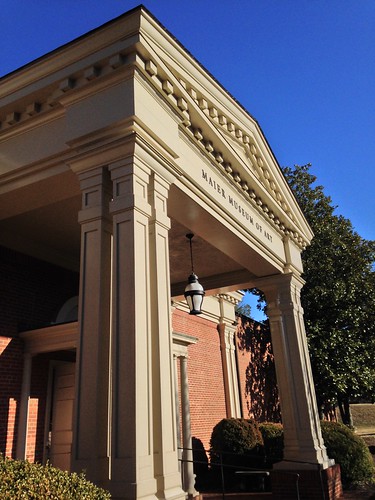
Volume IX, Issue V
Sudan's Lost Boys' Story
ISIS is late to the Caliphate-building party. Long before the “Islamic State” was on the scene slaughtering Christians and other infidels by the thousands with inconceivable violence, the government of Sudan was well into implementing its version of Islamic/Arab supremacism in Africa’s largest nation. Sudanese schoolbooks prophesy the coming Caliphate and Mahdi." -- Frontpage Magazine [1.]
The film: The Good Lie tells the story of Southern Sudan's tragic destruction through the eyes of four young people: Theo, Mamere, Paul and Abital. It begins in their beautiful little village, where Theo and Mamere are children playing a game remembering the names of their ancestors. They tend the village cattle as their people have for centuries until the brutal civil war destroys their village and leaves the adults dead.
The youth begin walking to find safety. They walk 400 miles to the Ethiopian border, then they must walk to the Kenyan refugee camp at Kakuma. They face the perils of thirst, starvation and wild animals. Thousands of them will die. At Kakuma they eventually learn that they will be resettled in America. The Good Lie unfolds the story of these rural village children, now young men and women, as they negutiate urban America.
[Spoiler Alert]
The film's title: The Good Lie is explained as the young people sit in an English class where they are discussing Huck Finn's lie to protect Jim, eventually freeing the man he had been taught to view as property. It was a moral dilemma for Finn, but indeed had precedent in history. The Hebrew midwives of Exodus 1 [2.] had protected the babies. In Exodus 1: 20, saying that the babies came before they got there, it says that: "Therefore G-d dealt well with the midwives."
Likewise, Rahab was praised for hiding the spies in Jericho and was rewarded with a place in the lineage of David. [3.] The 'Righteous Gentiles' of the Twentieth Century hid their Jewish neighbors and did so at great cost to themselves. The fact is that those who feared G-d and not man are commended for the 'lie.' But there is more, as portrayed in the film. As the children trudge on, they bed down in a field of elephant grass. They awake to rebel forces and Theo stands up and says that he is alone and lost.
He is conscripted by the rebels, and his sacrifice allows the others to escape. They trudge on. Theo, being the oldest, had assumed the role of Chief when the parents had been killed. Mamere is haunted by the image of his brother being hauled away by the rebels. He and his remaining siblings, Paul and Abital, make it to America. Mamere uneasily fills the role of elder and struggles as authorities separate Abital from the boys and younger brother Paul has a difficult time.
You're not Theo." Paul defiantly reminds Mamere, who one day learns that his older brother may have indeed survived. Mamere returns to Kakuma where he indeed finds Theo. He wants to arrange a visa for him to come to America but is told that that is now impossible. He goes to the airport with Theo and as they arrive he hands Theo his passport and his plane ticket. "You are now to only answer to the name Mamre," the younger brother says.
As Theo (now known as Mamere) makes his way successfully through the checkpoints, his brother watches... happy that he has given life to him, as he has been given the gift by Theo so long ago in the elephant grass. But there is a wonder to the story that is even greater, for it is but a representation of what the Christian has been given by Jesus, who became a man (our brother) and gave us His Identity as He took ours. He suffered the punishment that we so rightly deserve. He gave us life!
When it comes to righteousness, we have no 'papers' of our own. Indeed we travel to Heaven only by the righteousness of Christ. What is the 'Good Lie' for us? That we have been counted as righteous before we fully experience the sanctifying work of G-d in our hearts. Arnold Oceng, the Sudanese refugee who portrays Mamere, says of his character:
I think he's happy because as you've seen from the film, he has an emotional arc. From a very young age, he had to be the chief. So he had to look after everybody. That's a huge responsibility for a child. And especially a child who's been suffering from trauma from losing his father, his mother, his brother. That's a lot of trauma."
He's been fighting with it. He just wants to repay him, And he's got Paul there, digging at him every minute, like 'You're not Theo, you're not Theo,' and I think he's at peace with his decision. All he's ever wanted to do is just give back to Theo. And the whole film is about sacrifice and that's one of his sacrifices. Hence why The Good Lie."
Lynchburg's Maier Museum

The museum is located on the campus of Randolph College.
Photo by Bob Kirchman
In the Winter of 1951, as the cold war escalated, the campus of Randolph-Macon Woman’s College was quietly chosen to be the site of a confidential storage facility for use by the National Gallery of Art in the event of a national emergency. In exchange for the ownership and eventual use of the structure the College agreed, in a contract signed in March 1951, to maintain the facility and to make it available for emergency use by the National Gallery of Art for a period not to exceed 50 years. Fortunately Project Y, as the secret agreement was known, never had to be implemented.
Today the storage facility and its fine gallery rooms are home to one of the finest collections of American Art from the 19th, 20th and 21st Centuries. The collection began as a project of Louise Jordan Smith, who began the Art Department at the then all-women's school. At the beginning of the Twentieth Century, the study of art was not considered essential to higher education. Smith not only made it part of the curriculum, but she set to work acquiring fine examples. Though her collections grew quite impressive, as each class participated in the tradition of giving a piece of artwork to the school, it was the never-used Project Y building that gave it a fine home.
The gallery space was renovated in the 1970's and provides a rich experience for experiencing art. There is a portrait by Gilbert Stuart, who painted the famous portrait of George Washington. There are magnificent landscapes, richly framed. There is a Paris scene painted by Winslow Homer, a fine composition by Edward Hopper and a Thomas Hart Benton painting of politicians "preparing the bill" authorizing a mural Benton was to paint in the Missouri Capitol. Robert Vickery's stunning painting of his son discovering his own pulse is seen close to the end of your visit.
The Maier offers a rich gallery experience for those who desire one without the need to travel to a large city. Admission is free and the staff are helpful and friendly. The gallery rooms are spacious and inviting. The collection has been digitized, but those images (viewable below) give only a hint of the richness of the actual works.
Browse the Collection [click to view].

The Arboretum at Lynchburg's Old Cemetery.
Photo by Bob Kirchman
Sun, Ice and Mountains II

The island in Sherando Lake. This photo is displayed in the Virginia Blood Services Waynesboro Facility.
Photo by Bob Kirchman
Photos from THYME and The Journey are available through The Kirchman Studio [click to read]. Please contact them directly if you are interested.




No comments:
Post a Comment